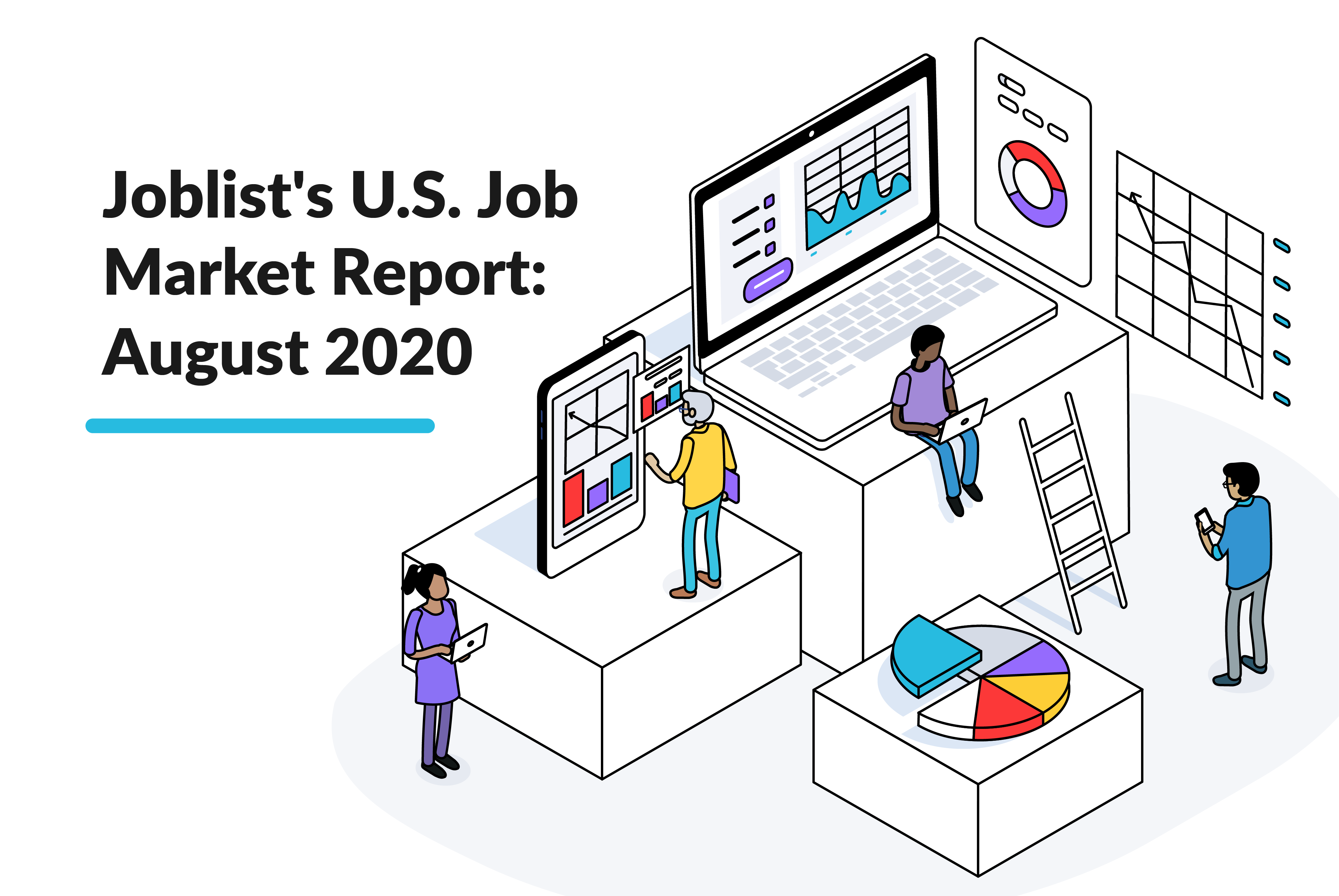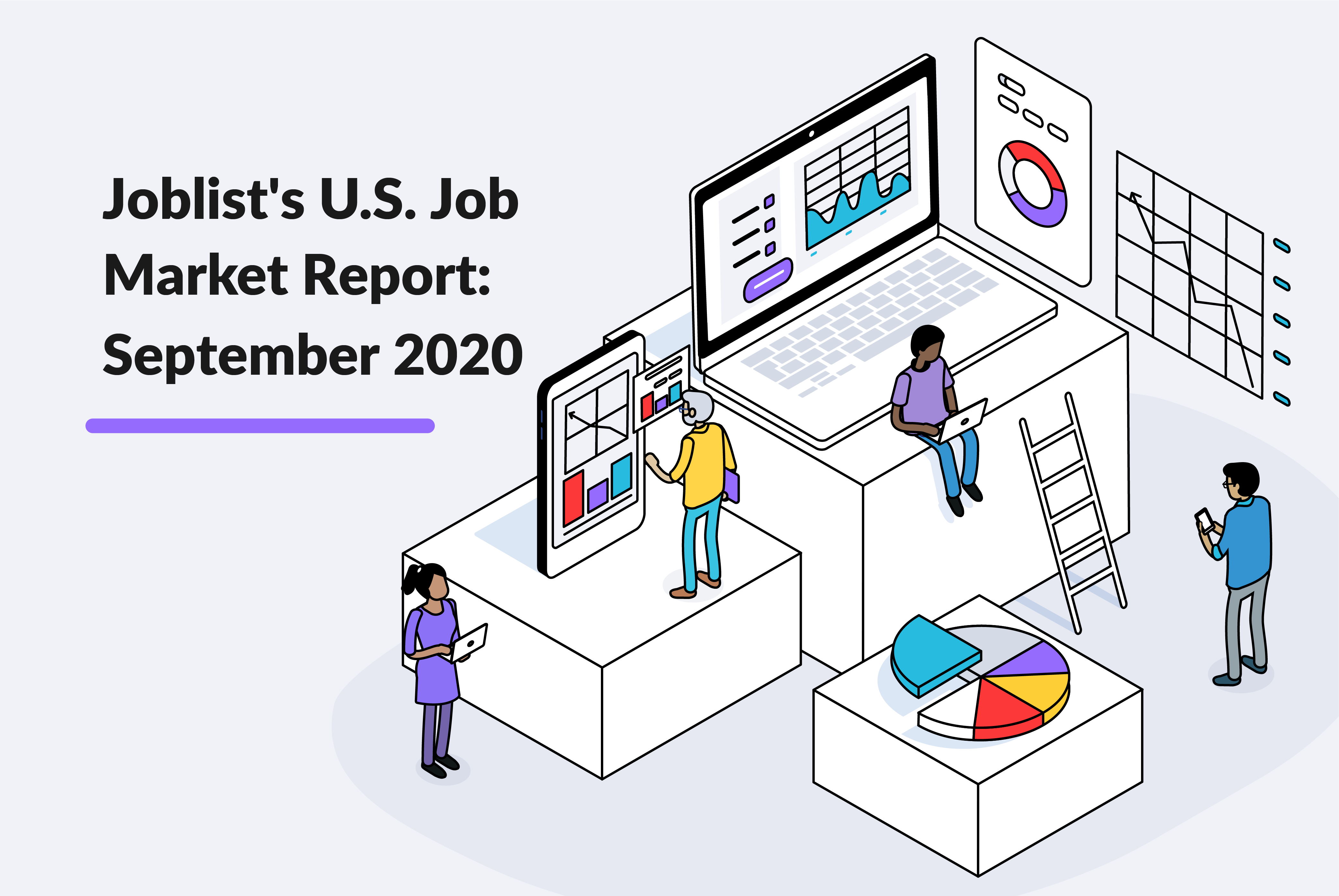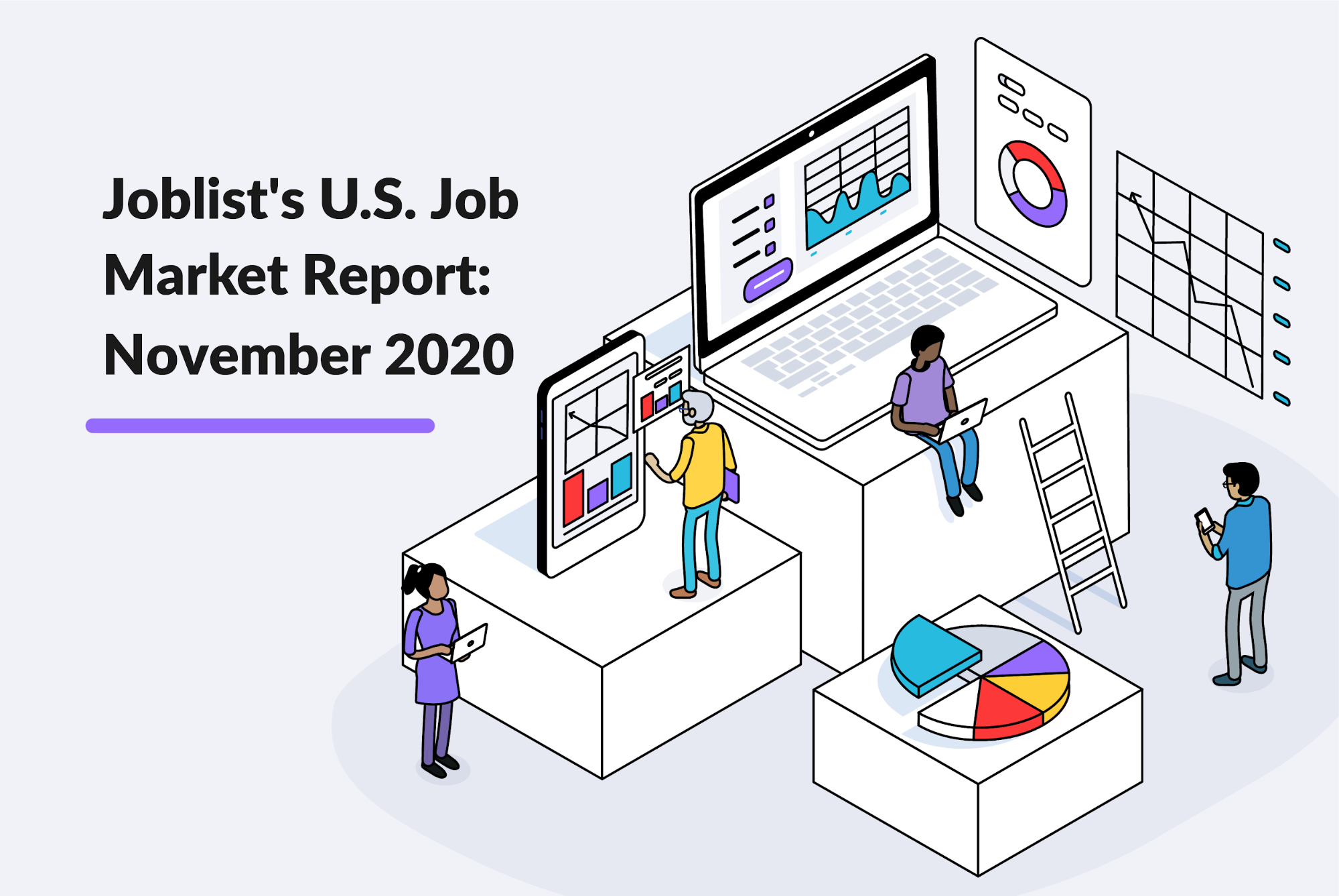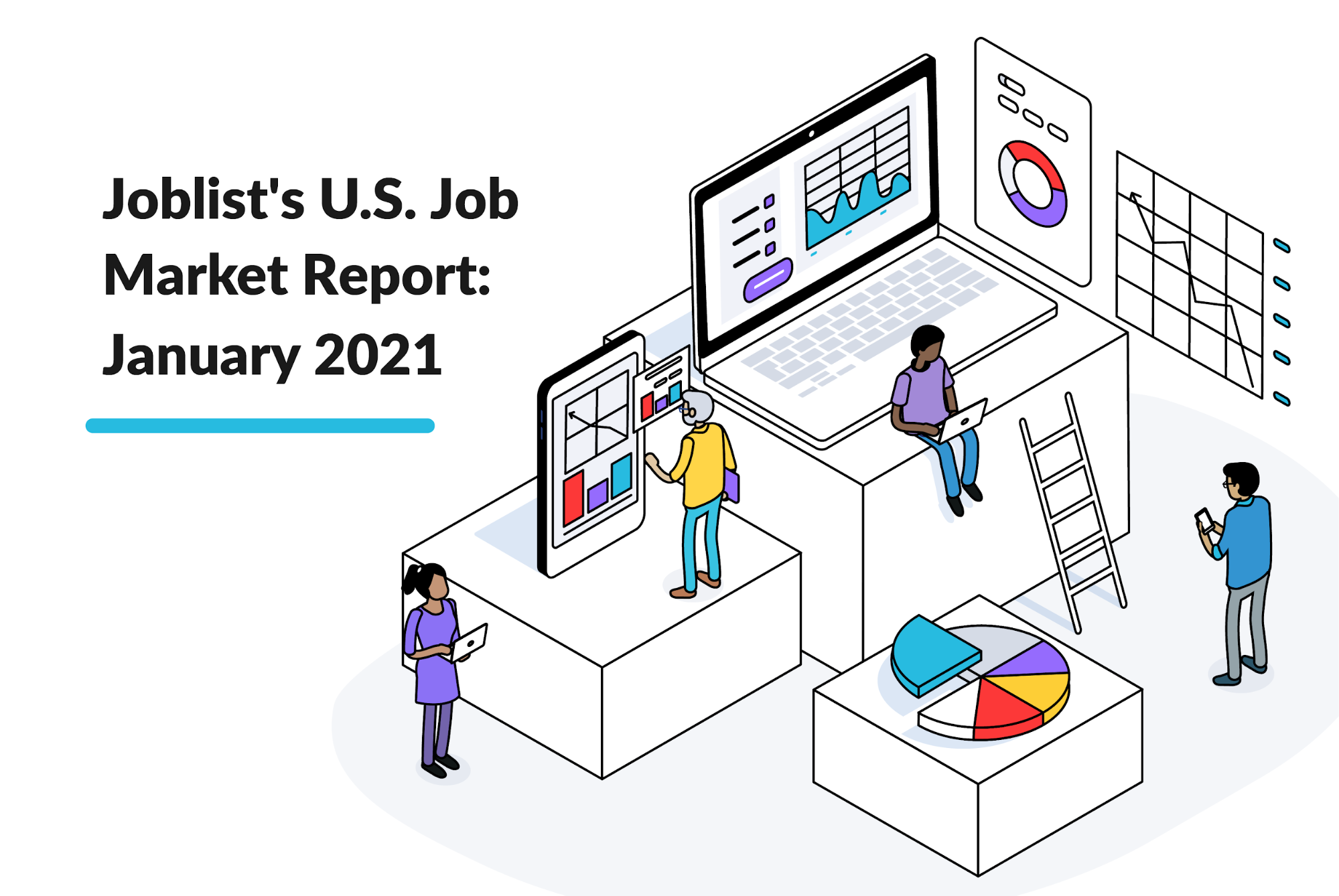- The pandemic is forcing a majority of job seekers to relax their job requirements. 65% of job seekers are now more likely to take a position outside of their industry and 42% are more open to contract, part-time, or gig work than they were before COVID-19.
- Long-term unemployment is a growing problem, with one-third of all unemployed people in America now out of work for six months or more. 68% of long-term unemployed Americans are financially insecure, with half of these individuals skipping medical care in the last year due to cost concerns.
- Although the pandemic is the biggest reported cause of long-term unemployment, other issues like macroeconomic trends, bad luck, discrimination, as well as a lack of education and skills are also mentioned by job seekers as contributing factors.
October 2020 United States Job Market Report
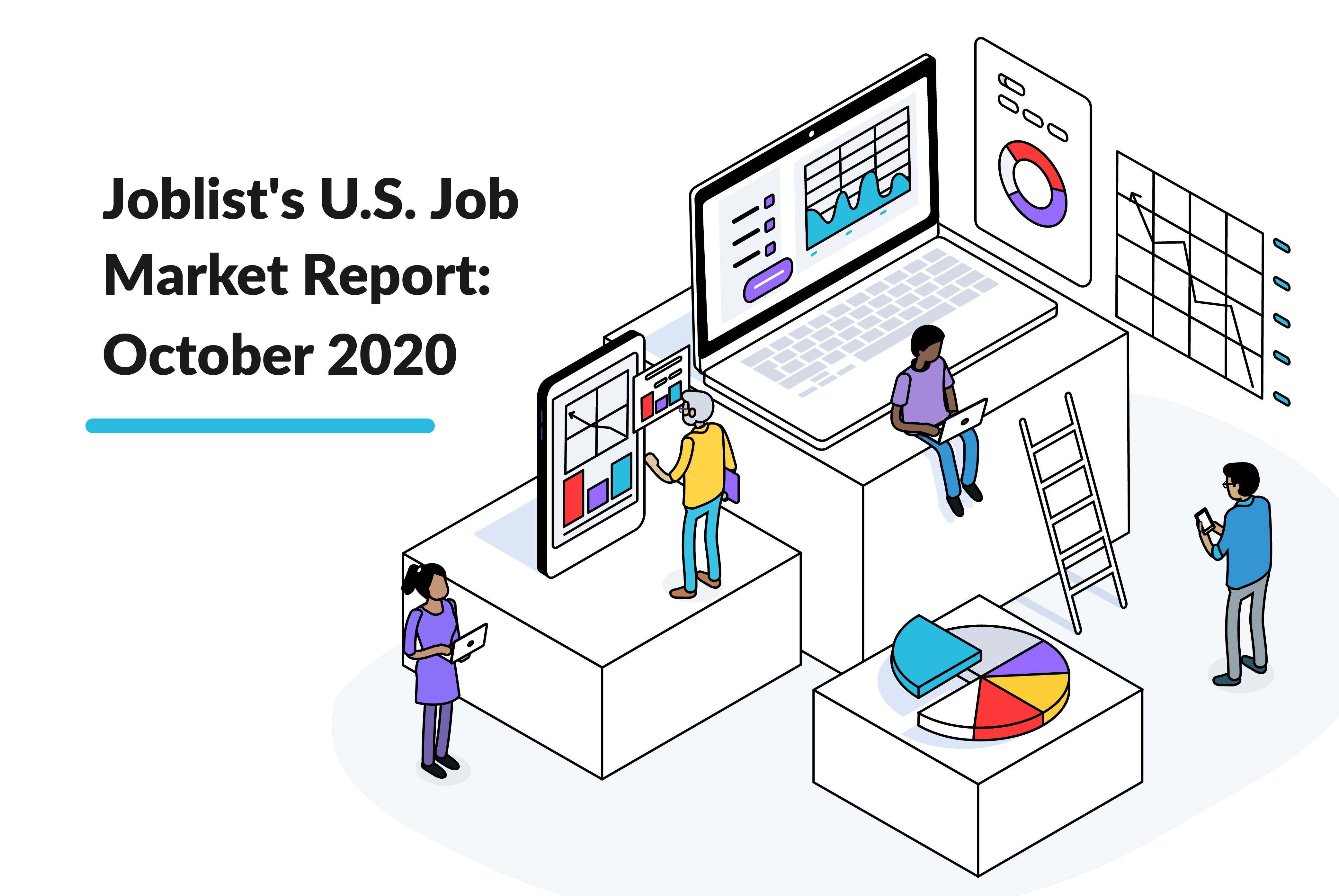
Key Insights
Introduction
The U.S. economy and job market continues to improve even as COVID-19 cases are surging in many parts of the country. This month’s Jobs Report from the BLS showed that the unemployment rate dropped by a full percentage point in October to 6.9%, and the economy continued to add jobs, albeit at a slower pace than in previous months. The job gains were driven by hiring in some of the hardest-hit industries, including leisure and hospitality, restaurants and bars, and retail. However, employment in these industries remains well below pre-pandemic levels.
We are now approaching the eight-month mark since COVID-19 was declared a global pandemic, and the number of long-term unemployed workers has been increasing every month. In October, the number of people jobless for six months or more increased by over two million.
In order to understand the plight of long-term unemployed workers, how workers are adapting to the current job market and economic climate, and their outlook for the future in light of COVID-19, we surveyed thousands of job seekers in October — including full-time, part-time, unemployed, and furloughed workers.
The Plight of the Long-Term Unemployed
Although the unemployment rate continues to drop and 638,000 jobs were added in October, the number of long-term unemployed Americans continues to rise. In October, 1.2 million more people were considered “long-term unemployed” — which are defined as individuals who have been jobless for at least six months — compared to September, bringing the total number of long-term unemployed to 3.6 million. The number of long-term unemployed workers and the average unemployment duration have been trending upwards since May. The long-term unemployed now make up about one-third of all unemployed workers.
The pandemic is by far the most commonly reported reason for long-term unemployment. According to a recent Joblist survey, 59% of long-term unemployed job seekers cited COVID-19 as a top reason for their unemployment. Respondents also reported that a lack of opportunities in their area (26%), macroeconomic problems facing the country and their industry (23%), and bad luck (19%) were contributing factors. Relatively few said that a lack of education and skills (8%) or discrimination (6%) were keeping them out of work.
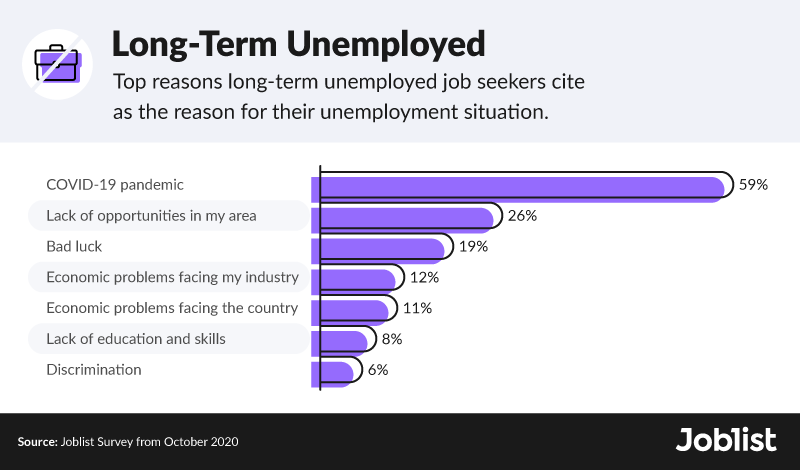
Unsurprisingly, a majority (68%) of long-term unemployed job seekers report experiencing financial insecurity. Enacted in March, the CARES Act provided unemployed workers with a $600 weekly bonus through July. The Lost Wage Assistance (LWA) stepped in after that in August, giving unemployed workers an extra $300 weekly, but that payment is now long gone in most states. Financial stress combined with a lack of health insurance means that many long-term unemployed people may struggle to access and afford health care. While most long-term unemployed job seekers have not skipped or postponed medical care, half of those who are very insecure financially have done so in the last year.
Despite the financial and emotional stress, there are some silver linings to unemployment. Nearly two-thirds of long-term unemployed job seekers are spending more time with their family, and 53% have spent more time on household chores or home improvements. Survey respondents also report spending more time on hobbies (30%), learning a new skill (28%), or enjoying the time off from work (26%).
Job Seeker Flexibility
With high numbers of unemployed people — many of whom are long-term unemployed — and slow or nonexistent hiring in some industries, flexibility is important for a successful job search during these unusual times. Indeed, 65% of Joblist job seekers responded in a recent survey that they are more likely to take a position outside of their industry than they were before the COVID-19 pandemic. Additionally, 42% of Joblist job seekers are now more open to contract, part-time, or gig work compared to before the pandemic hit.
Employed job seekers might be looking for better pay, more job stability, or a job with more flexible hours, and they can usually afford to be picky about potential jobs. Not surprisingly, openness to part-time and gig work differs by employment status — more unemployed job seekers are willing to consider such positions than employed job seekers. While job seekers are showing more flexibility in terms of industry and types of positions, a smaller proportion (37%) have changed their expectations for pay and raises as a result of COVID.
Joblist survey results show that job seekers are most flexible when it comes to changing industries or fields, and 65% of them are willing to take an entry-level job in a different field than they have worked in previously. Over one-third of Joblist job seekers are open to positions with non-traditional hours and schedules, and one-quarter would take a job that pays significantly less. However, fewer job seekers are willing to take a job with a long commute or move to a different state. The financial insecurity of unemployed job seekers and motivations for employed job seekers affect the concessions these two groups are willing to make — unemployed job seekers are more than twice as likely to take a job that pays significantly less while employed job seekers are much more willing to move to a different state.
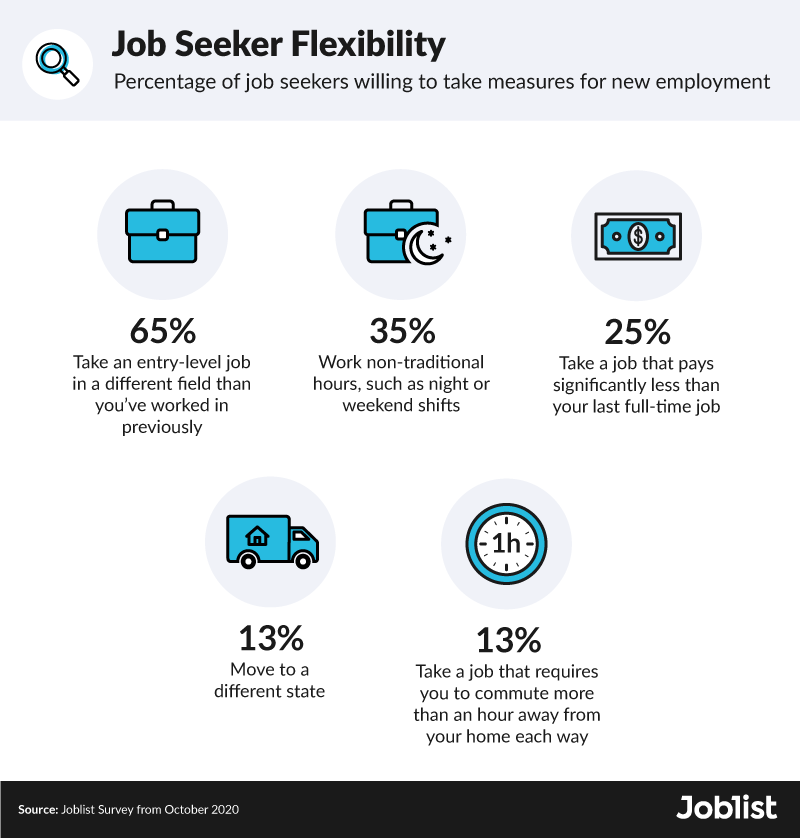
Future Outlook on Employment
The October Jobs Report from the BLS shows that the economy added 638,000 jobs last month, and the unemployment rate dropped by a full percentage point to 6.9%, indicating that the labor market is continuing its slow recovery. While the jobs added are less than prior months, the report is better than what many economists expected.
Recent Joblist survey results show that job seeker perceptions about job market difficulty are similar to September. About half of job seekers say getting a job is “somewhat difficult” or “very difficult” during this time. However, compared to September, job seekers are slightly less optimistic about the future job market, and there’s a higher level of uncertainty.
Despite the decline in optimism about the future, three-quarters of job seekers believe it will only take two months or less to find a job. Interestingly, this doesn’t differ between full-time employed job seekers and unemployed job seekers. Overall, job seeker estimates for the length of time to find a new position are unchanged from September.
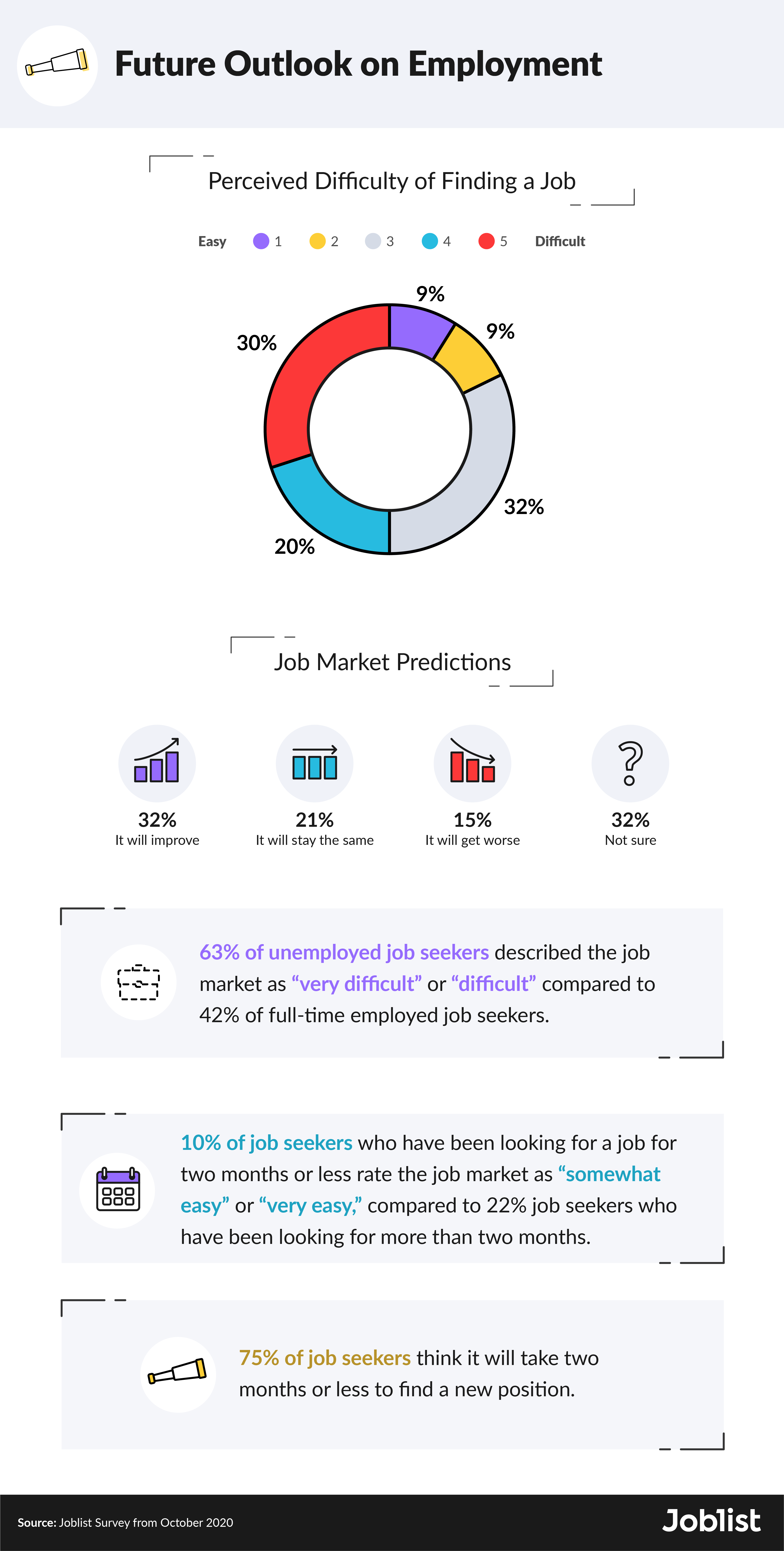
Conclusion
Although the job market continues to make slow but steady improvements, more and more job seekers can be counted as long-term unemployed. Extra unemployment benefits have disappeared in most states, and many of these job seekers feel financially insecure. Given the large numbers of unemployed workers, one-third of which have been unemployed for six months or more, job search flexibility is as important as ever. Joblist job seekers are willing to explore different jobs and industries, and make other concessions as well.
Job seeker perceptions about the difficulty of the job market changed very little from last month. However, compared to September, job seekers are slightly less optimistic about the future job market, and a high degree of uncertainty remains. With COVID-19 cases spiking across the country, some businesses may react by putting the brakes on hiring. In the coming months, Joblist will continue studying how the pandemic has impacted the job market and job seekers in particular.
It’s more important than ever for every person to find the right job for their specific needs. At Joblist, we know every job search is different. Helping you find the right job means surfacing results tailored to your experience, industry, and job priorities. Whether you’re a recent graduate, unemployed due to COVID-19, or looking for a remote-work opportunity that will let you keep your home office, Joblist will curate personalized matches based on criteria that you define. Even better, you're not alone in the process — Joblist enables you to share the list of jobs you're interested in with your friends, family, and others in your network so that they can also participate in your job search to make it a little less stressful.
Methodology
We surveyed 4,630 American job seekers about their outlook on the current job market and expectations for the future. We also surveyed an additional 2,013 American job seekers about how the COVID-19 pandemic changed their search criteria. Finally, we surveyed 2,105 American job seekers who are long-term unemployed about the reasons for their unemployment and their experience looking for jobs this year.
All 8,748 survey respondents were Joblist users. The surveys were conducted over the course of October 2020.
This data has not been weighted, and it comes with some limitations. All of the information in this study relies on self-reporting. With self-reporting, respondents may over- or underreport their answers and feelings to the questions provided.
Fair Use Statement
It’s difficult to predict exactly what the future will hold, but we hope this data helps paint a more vivid representation of the job market in America today. Share these findings with your readers for any noncommercial use by including a link back to this page so they have full access to our methodology and results.


